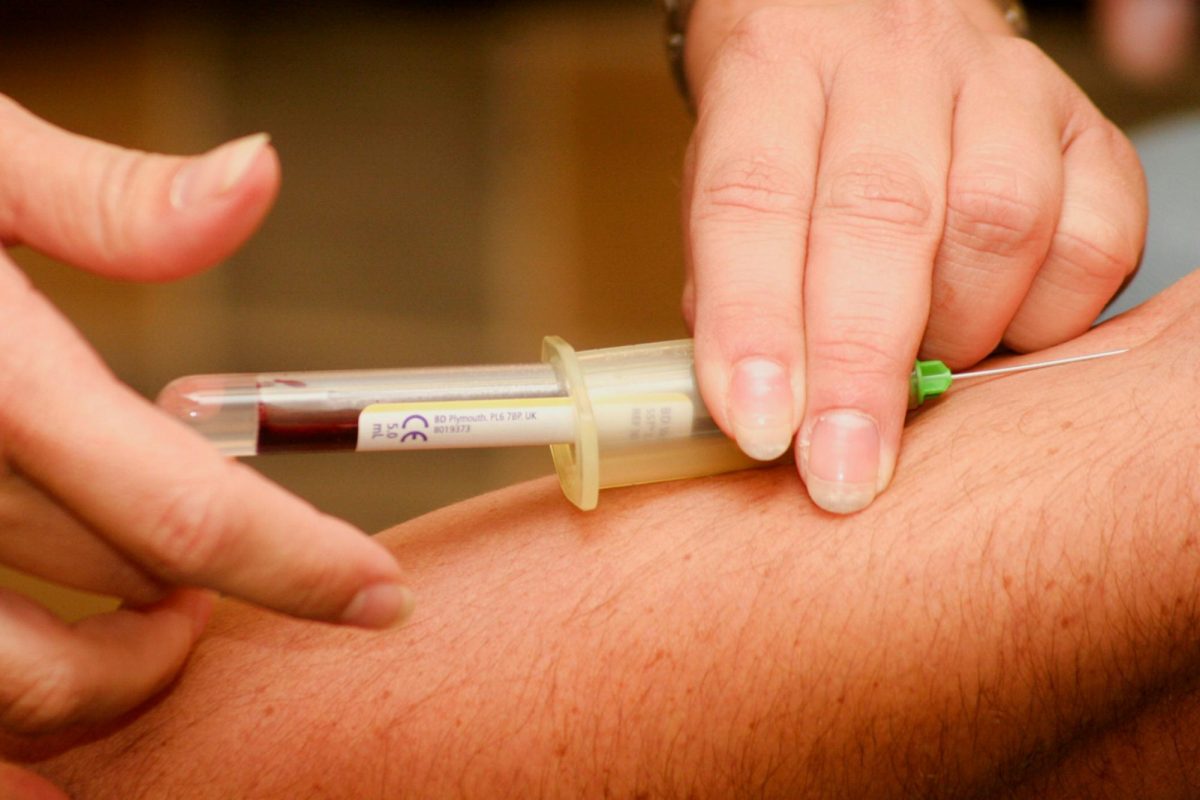The Bucks Newtown campus hosted a blood drive organized by the American Red Cross on Friday March 14. The Friday morning event was run by Emily Gomez, the representative of the event.
The American Red Cross blood drive had several volunteers who had helped organize the event and transfuse both blood and Power Red. To ensure the comfort of the volunteers, the event’s setting consisted of calming and soothing music playing in the background while consistent silence throughout the hour-long sessions.
For the American Red Cross, blood is the most common type of donation and it takes approximately an hour to donate a pint of ‘whole blood.’ Power Red is a different method of blood donation that involves collecting primarily red cells from the blood and returning most of the plasma and platelets to the donor — these donors require a specific blood type: A negative, B negative or O.
The equipment can be easily differentiated from one another, the larger-sized stations collect Power Red and the simple blood donations only had a smaller station size. Tables were set to interview donors to see if they were safe to transfuse. One table had various snacks and drinks for donors to have after a donation.
Those with a successful donation can receive a $10 gift card sent via email including an A1C test. An A1C test or glycated hemoglobin test measures your average blood sugar levels over the past two to three months by calculating the percentage of glycated hemoglobin in your blood.
A representative of the blood drive, Emily Gomez, was asked questions about the event and its importance that encourage blood donations such as blood shortage.
When asked how this event contributes to Bucks, she said, “There’s always a blood shortage, so just reaching out to different parts of the community. Colleges and high schools are the main places where we do go to receive donations.” She continued on with, “Blood is needed all the time on whether it’s like a born baby, trauma patient, burn patient, somebody having surgery, even somebody giving birth; sometimes they need blood too.”
When asked about how many donors the American Red Cross intends to get, she stated that they had 39 slots — as of that day, out of all of them, 28 appointments were appointments. Their goal was to receive over 20 appointments.
One potential donor was deferred that same day, and another person didn’t have a successful donation. There are many reasons why it may have been successful such as clotting, feeling unwell, a blood bag that wasn’t completely filled, hematoma are just a few factors.
When asked how the American Red Cross ensures the safety of their donors during the process, she responded, “So we do have a very strict training, and one of the things that is stressed during training, is something that we call SQEP.” SQEP stands for,. Safety. Quality. Ensuring. Productive. “We have these questions, that everybody has to do, before donating. It asks very personal questions about their health history, as well as their travel history.” When it comes to privacy they have privacy boards, ensuring that the boards are distanced from each other to create a safe and comfortable environment.
If a donor is nervous they can try to walk them through the process of donating, even if it is their first time. They ask the donor what makes them feel more comfortable to then begin donating. A volunteer for the blood drive at Bucks, Sandy Vanderrzell, was asked why she volunteered, and she answered, “I was volunteering at the hospital, before Covid. When Covid hit, I could no longer volunteer and I wanted to do something for the community, so my husband and I both decided to volunteer for the Red Cross.”
One donor at the event was asked how many times they had donated, and they revealed that they were making their 90th blood donation. They donate their blood every 56-60 days.


